
Think Again: Are Education Programs for High Achievers Inherently Inequitable?
This brief challenges the notion that marginalized students of high ability are harmed by advanced education, with implications for better screening measures and expansion of programs.
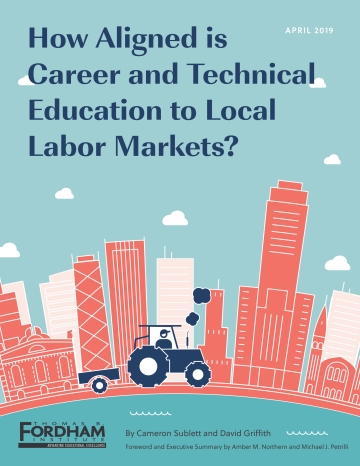
How Aligned is Career and Technical Education to Local Labor Markets?
The recent reauthorization of the Carl D. Perkins Career and Technical Education Act—the principal federal education program supporting career and technical education (CTE)—expressly aims to “align workforce skills with labor market needs.” Our latest report examines whether students in high school CTE programs are more likely to take courses in high-demand and/or high-wage industries, both nationally and locally.
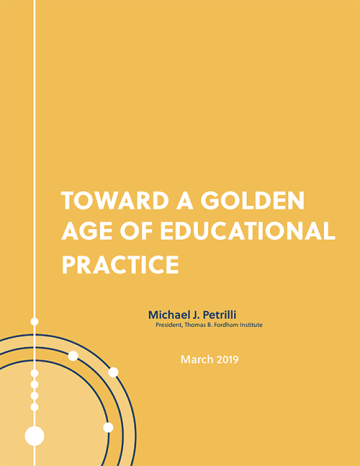
Toward a Golden Age of Educational Practice
In recent years, we have reached a homeostasis in education policy, characterized by clearer and fairer but lighter-touch accountability systems and the incremental growth of school choice options for families—but little appetite for big and bold new initiatives.
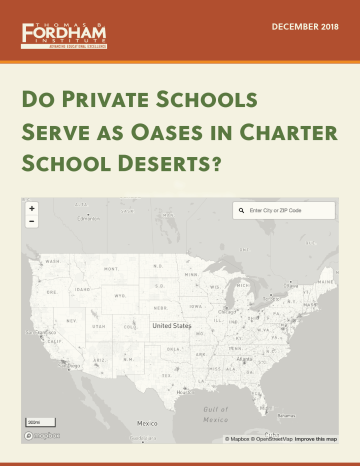
Do Private Schools Serve as Oases in Charter School Deserts?
Last April, we published a report by Andrew Saultz and colleagues highlighting “charter school deserts” across the country, or high poverty areas that lack charter schools.
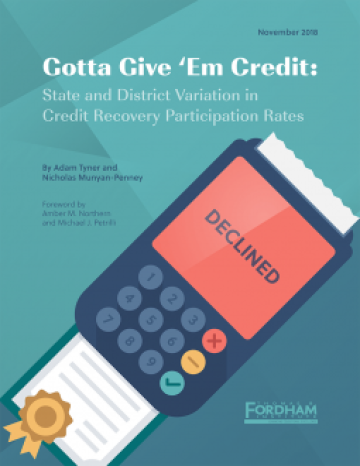
Gotta Give 'Em Credit: State and District Variation in Credit Recovery Participation Rates
Credit recovery, or the practice of enabling high school students to retrieve credits from courses that they either failed or failed to complete, is at the crossroads of two big trends in education: the desire to move toward “competency based” education and a push to dramatically boost graduation rates.
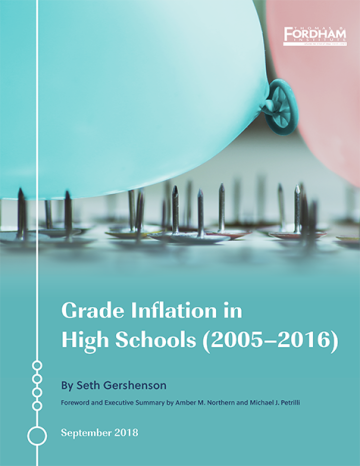
Grade Inflation in High Schools (2005–2016)
Although the vast majority of American parents believe their child is performing at or above grade level, in reality two-thirds of U.S. teenagers are ill-prepared for college when they leave high school.

The State of State Standards Post-Common Core
Eight years ago, we compared states’ English language arts (ELA) and mathematics standards to what were then the newly-minted Common Core State Standards. That report found that the Common Core was clearer and more rigorous than the ELA standards in thirty-seven states and stronger than the math standards in thirty-nine states.
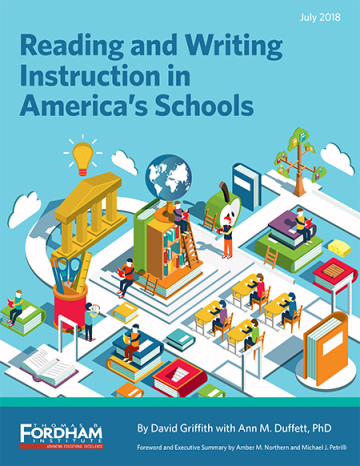
Reading and Writing Instruction in America's Schools
Since 2010, when most states adopted the Common Core State Standards (CCSS), the Thomas B. Fordham Institute has been committed to monitoring their implementation.
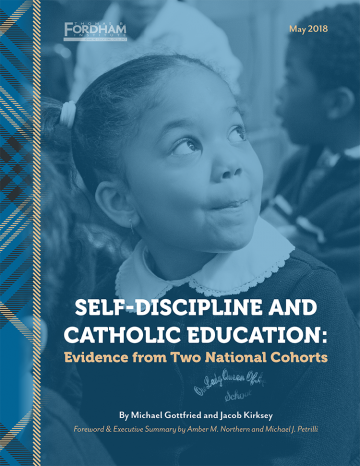
Self-Discipline and Catholic Schools: Evidence from Two National Cohorts
Regardless of where you stand on the debate currently raging over school discipline, one thing seems certain: Self-discipline is far better than the externally imposed kind.
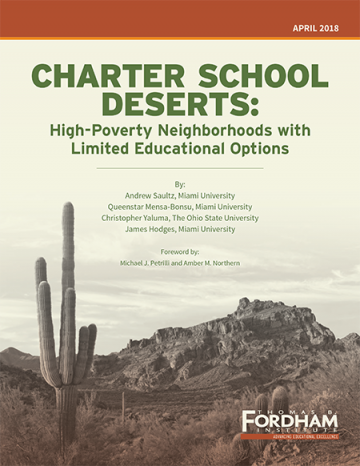
Charter School Deserts: High-Poverty Neighborhoods with Limited Educational Options
2016–17 was one of the slowest-growth years for charter schools in recent memory. Nobody knows exactly why, but one hypothesis is saturation: With charters having achieved market share of over 20 percent in more than three dozen cities, perhaps school supply is starting to meet parental demand, making new charters less necessary and harder to launch.
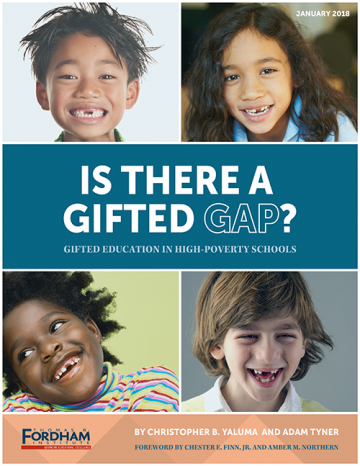
Is There a Gifted Gap? Gifted Education in High-Poverty Schools
Schools have long failed to cultivate the innate talents of many of their young people, particularly high-ability girls and boys from disadvantaged and minority backgrounds. This failure harms the economy, widens income gaps, arrests upward mobility, and exacerbates civic decay and political division.
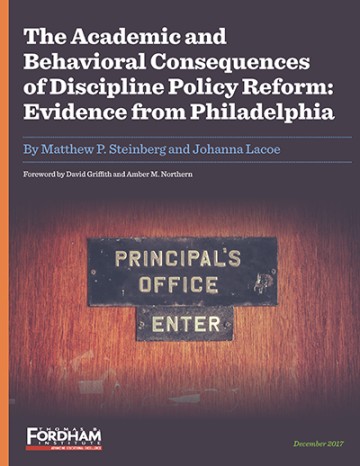
The Academic and Behavioral Consequences of Discipline Policy Reform
One important question about school discipline is whether it helps or harms those being disciplined. But a second, equally important question is whether a push to reduce the number of suspensions is harmful to the rule-abiding majority.
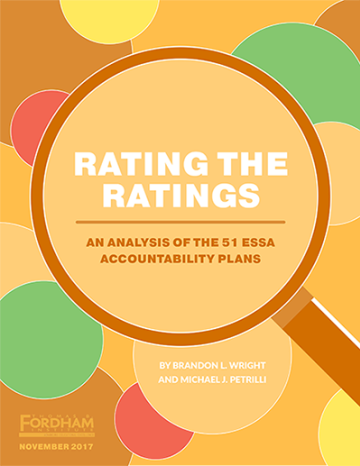
Rating the Ratings: An Analysis of the 51 ESSA Accountability Plans
The Every Student Succeeds Act grants states more authority over their accountability systems than did No Child Left Behind, but have they seized the opportunity to develop school ratings that are clearer and fairer than those in the past?